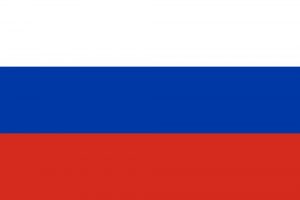Receive SMS online Russia for +79271170634
Russia phone number for verification code
+7 927 117 06 34

- 1Refresh this page to get the new message.
- 2New messages will arrive in about 1 minute.
- 3⚠️ Anyone can see the messages of this number.
. . .
【拼多多】您的验证码为:2285 ,该验证码 5 分钟有效,请勿泄露他人。
【用药助手】验证码296590 ,感谢您询价,如非本人操作请忽略。
【抖音】短信登录验证码:3473 ,切勿转发或告知他人
【搜狗翻译】验证码:9996 ,本验证码有效时间5分钟,请勿告知他人。
【穿衣搭配】短信登录验证码:3393 ,切勿转发或告知他人
【千丁】登录验证码:9911 ,切勿泄露或转发他人,以防帐号被盗。如非本人操作请忽略本短信。验证码20分钟内有效。
【外勤365】您正在登录验证,验证码380236 ,切勿将验证码泄露于他人,本条验证码有效期15分钟。
【滴滴司机】您的注册验证码是 715224 ,请不要把验证码泄漏给其他人,如非本人请勿操作。
【Outlook】验证码392359 ,您正在注册成为新用户,感谢您的支持!
【17度租赁公装】628409 短信登录验证码,5分钟内有效,请勿泄露。
Do you need to receive SMS messages from websites, apps, or services that require mobile verification? Are you worried about sharing your real phone number online? If so, you might want to consider getting a temporary phone number in China.A temp phone number is a disposable phone number that you can use for a short period of time. You don't need to register for a new phone line or contract with a carrier. Instead, you can get a virtual number that is linked to a local or international phone number.Why China? One of the biggest advantages of getting a temp phone number in China is the affordability and convenience. China has a large number of virtual number providers that offer low rates and fast activation. You can use these services to receive SMS messages from all over the world, including the United States, Europe, and Asia.Here are some reasons why you might want to consider using a temp phone number in China:1. Protect your privacySharing your real phone number online can put you at risk of spam, scams, and identity theft. A temp phone number can help you protect your privacy and keep your personal information secure.2. Avoid unwanted calls and messagesUsing a virtual number means you don't have to worry about getting unwanted calls or messages from telemarketers, spammers, or stalkers. You can simply dispose of the number and move on.3. Access global servicesSome websites and apps restrict access to users from certain countries or regions. With a temp phone number in China, you can bypass these restrictions and enjoy access to global services.How to get a temp phone number in ChinaGetting a temp phone number in China is easy and straightforward. Here are the steps:1. Choose a virtual number providerThere are many virtual number providers in China, such as Telos, 2ndLine, and Hushed. Each provider has its own pricing, features, and terms of service. Choose one that meets your needs and budget.2. Download the appOnce you have chosen a provider, download the app from the App Store or Google Play. The app will guide you through the signup process and activation.3. Verify your identitySome virtual number providers require you to verify your identity before you can use the service. This usually involves submitting a copy of your ID or passport.4. Choose your numberAfter you have verified your identity, you can choose your virtual number. You can select a number from a list of available numbers or customize one to your liking.5. Start receiving SMS messagesOnce you have activated your virtual number, you can start receiving SMS messages from websites, apps, and services that require mobile verification.In conclusion, using a temp phone number in China is a smart choice for anyone who needs to receive SMS messages with virtual numbers. It can help protect your privacy, avoid unwanted calls and messages, and access global services. Just remember to choose a reliable and trustworthy provider and follow the activation process carefully. Stay safe and happy texting!